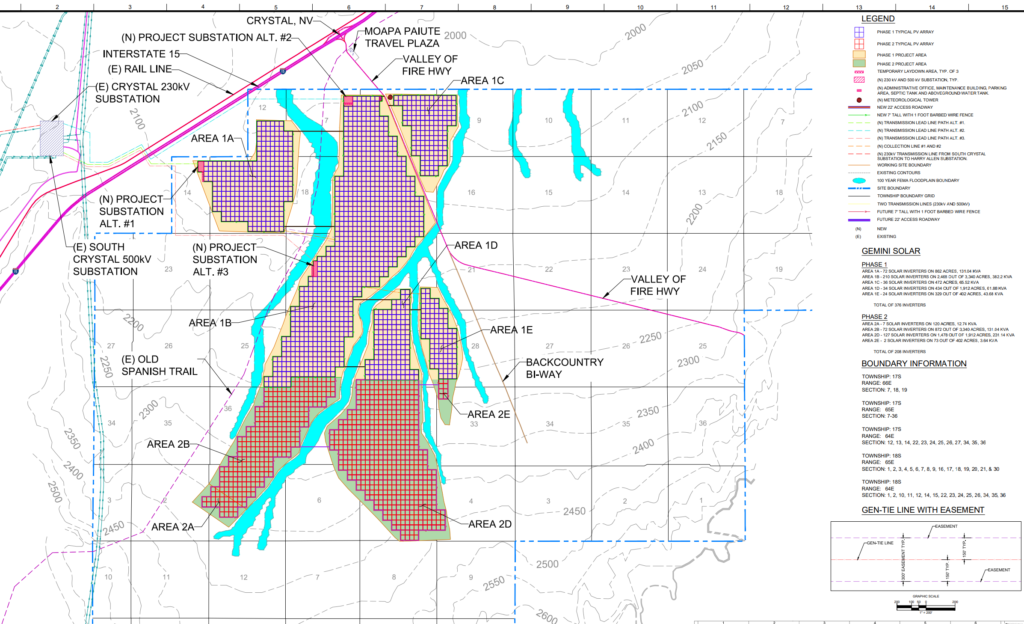The Gemini Solar + Battery Storage Project has been given its final approval by the U.S. Department of Interior’s Bureau of Land Management. The facility will be owned and operated by the investment firm Quinbrook, and will sell its electricity to Warren Buffett-owned electricity utility NV Energy in a 25 year power purchase agreement.
The facility will be a 690 MWac/1 GWdc+ power plant coupled with a 350 MW/1.4 GW MWh battery.
Officially, the solar module sizing of the facility is an unknown as the owner only released the AC sizing of the power plant. However, the plant’s owner released a press statement noting the the site will be built out with greater than 2.5 million bifacial solar modules. For utility scale projects, before accounting for any wattage benefits from bifaciality, 400 watt solar modules are about the starting point.
The project is to be directly owned by the U.S.-based investment arm of Quinbrook Infrastructure Partner’s newly launched portfolio company Primergy Solar, LLC. The facility will cost approximately $1.1 billion and will be located in Clark County, Nevada. The Quinbrook press released suggests the facility is “the world’s largest solar PV and battery storage project announced to date.”
Environmental review documents can be found on the Bureau of Land Management’s website dedicated to the project. The flood analysis report offers an almost artistic description of the solar facility and the surrounding areas.
Officially, the power purchase agreement for the electricity is to be sold to NV Energy. However, the documentation suggests Los Angeles might be getting a portion of the electricity:
The gen-tie lines would consist of a 230-kilovolt (kV) circuit for delivery of 440 MW to NV Energy Balancing Authority and a 500 kV circuit for delivery of 250 MW to the Los Angeles Department of Water and Power (LADWP) 500 kV transmission line (N-10683) at the Harry Allen Substation connected through Crystal Substation.
It is probable that the LADWP portion of the electricity sales is a holdover from older proposals, and since much of these forms are copy/pasted from older versions multiple times.
At a cost of $1.1 billion, a few assumptions could be made to roughly guess costs of hardware and installation. If 1 gigawatt of solar panels are installed, and the pure installation costs of a site of this size are around 75-80¢/watt, that’d total $750-800 million for the solar portion of the project. Roughly, one could assume that the energy storage portion of the project – 1.4 GWh worth – costs $250/kWh, totalling about $350 million.
This will bring the total project costs to about $1.1 billion.


